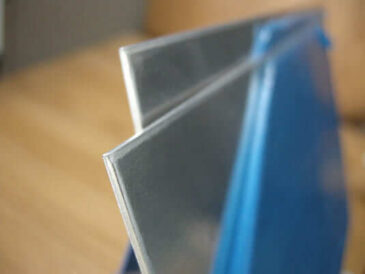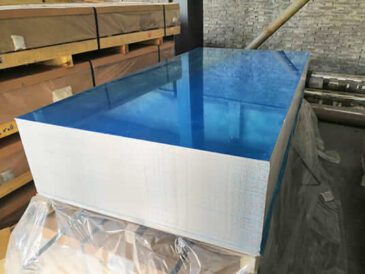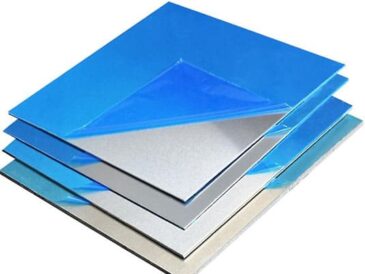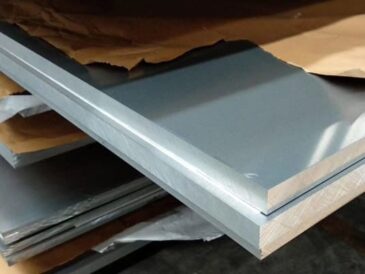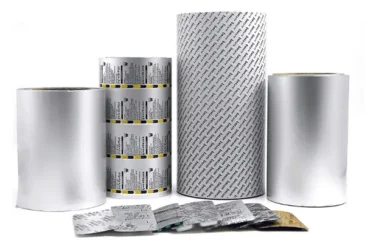3003 Aluminiumblech vs 1060 Aluminiumblech
188 Ansichten 2024-05-21 09:49:37
3003 Aluminiumblech und 1060 Aluminiumblech sind beides gängige Aluminiumbleche. Sie können sich in manchen Nutzungsszenarien gegenseitig ersetzen, Sie weisen jedoch große Abweichungen in der chemischen Zusammensetzung auf, mechanische Eigenschaften und Preis. Deshalb, you need to understand your usage scenarios before ordering aluminum sheets. And the difference between 3003 Aluminiumblech und 1060 Aluminiumblech.
3003 Einführung von Aluminiumblechen
3003 Aluminiumblech is one of the most common alloy aluminum sheets. Es handelt sich um ein repräsentatives Produkt der 3000 Serie (Al-Mn) Aluminiumteller. It is a widely used anti-rust aluminum. The strength of this alloy is not high (slightly higher than industrial pure aluminum).
Es kann nicht durch Wärmebehandlung verstärkt werden, so cold working methods are used to improve its mechanical properties: it has high plasticity in the annealed state, gute Plastizität bei der Halbkaltverfestigung, geringe Plastizität beim Kaltverfestigen, gute Korrosionsbeständigkeit, gute Schweißbarkeit, and can be cut. Poor performance.

3003 Aluminiumblech verpackt
It is mainly used for low-load parts that require high plasticity and good weldability and work in liquid or gas media, such as fuel tanks, gasoline or lubricating oil conduits, various liquid containers and other small-load parts made by deep drawing: Wire is used to make rivets.
Chemische Zusammensetzung
In terms of chemical composition, the main elements of 3003 aluminum plate include aluminum (Al) and manganese (Mn), of which the aluminum content is greater than 98% and the manganese content is between 1-1.5%. 3003 aluminum sheet also contains a small amount of copper (Cu) and other impurity elements. The content and proportion of these alloy elements play an important role in the hardness, Stärke, corrosion resistance and other properties of 3003 Aluminiumplatten.
Mechanical standards
Mechanical standards are an important indicator for measuring material performance and an important basis for evaluating the quality of 3003 Aluminiumbleche. In terms of mechanical standards, the hardness, Stärke, ductility and corrosion resistance of 3003 aluminum plates are all key indicators.
Die Härte von 3003 aluminum sheet is mainly reflected in its tensile strength and yield strength. Nach internationalen Standards, the tensile strength of 3003 aluminum sheet is between 110-205MPa and the yield strength is between 40-150MPa. This shows that 3003 aluminum plate has a certain hardness and strength to a certain extent and can meet the needs of different fields.
The ductility of 3003 aluminum plate is also one of its important mechanical standards. The elongation rate of 3003 aluminum sheet is usually above 10%, which means that it has good sheet forming performance and is suitable for various stamping and forming processes.
Die Korrosionsbeständigkeit von 3003 aluminum sheet is also one of the important indicators in its mechanical standards. Because it contains manganese and other alloying elements, 3003 aluminum plates have good corrosion resistance and can be used in humid and corrosive environments for a long time without being damaged.
Einführung zu 1060 Aluminiumblech
1060 aluminum sheet and strip, enthaltend 99.6% Aluminium, is also called pure aluminum plate. It is a commonly used series in the aluminum sheet and strip family. The advantages of this series of aluminum plates: the most commonly used series, the production process is relatively simple, the technology is relatively mature, and the price has a huge advantage compared to other high-end alloy aluminum plates. It has good elongation and tensile strength, und kann herkömmliche Verarbeitungsanforderungen vollständig erfüllen (Stempeln, Streckung) und hohe Formbarkeit.
1060 Aluminiumblech is industrial pure aluminum with high plasticity, Korrosionsbeständigkeit, Elektrische Leitfähigkeit und Wärmeleitfähigkeit, aber geringe Festigkeit, kann nicht durch Wärmebehandlung verstärkt werden, und ist schlecht bearbeitbar; it can be gas welded, hydrogen atom welded and contact welded, but is not easy to braze; Easy to withstand various pressure processing, stretching and bending.

3003 Aluminiumblech vs 1060 Aluminiumblech
1060 aluminum plate is widely used in products that do not require high strength. Products are commonly used in signboards, Werbetafeln, building exterior decorations, bus bodies, high-rise building and factory wall decorations, kitchen sinks, lamp holders, fan blades, electronic parts, chemical instruments, Teile für die Bearbeitung dünner Bleche, deep drawing or spinning concave parts. Shaped utensils, welded parts, Wärmetauscher, clock surfaces and disks, Namensschilder, Geschirr, Dekorationen, reflektierende Ausrüstung, usw.
3003 Aluminiumblech vs 1060 Aluminiumblech
Alloy differences
| Al(%) | Und (%) | Cu (%) | Mg(%) | Zn (%) | Mn(%) | Von(%) | V (%) | Fe(%) |
| 99.60 | 0.25 | 0.05 | 0.03 | 0.05 | 0.03 | 0.03 | 0.05 | 0.35 |
| 96.8-99.0 | 0.60 | 0.05-0.20 | 0-0.05 | 0.10 | 1.00-1.50 | – | – | 0.70 |
Differences in mechanical properties
| Legierung | Zugfestigkeit | Streckgrenze |
| 1060 | 110-136 | ≥35 |
| 3003 | 120-160 | ≥85 |
Differences in use
Seit 1060 aluminum plate has good electrical conductivity, it is usually used in electronic devices, Batterien, capacitors and other fields. Due to its higher strength and corrosion resistance, 3003 aluminum sheet is suitable for manufacturing body panels, Treibstofftanks, ships and other fields with high strength requirements.
1060 Anwendung von Aluminiumblechen
- Elektronische Produkte: used to manufacture electronic components, Elektrogehäuse, LED heat sinks, usw., taking advantage of its good electrical and thermal conductivity properties.
- Building materials: used to make decorative panels, Vorhangfassaden, Dachmaterialien, usw., with good corrosion resistance and aesthetics.
- Advertising signs: used to make signs and billboards, thanks to its good formability and surface treatment capabilities.
- Household appliances: such as kitchen sinks, Lampenschirme, fan blades, usw., taking advantage of their ease of processing and corrosion resistance.
- Chemical equipment: used to make certain parts of chemical equipment to take advantage of its chemical stability.

Anwendungen von 1060 Aluminiumblech
3003 aluminum plate application
- Chemical equipment and containers: In the pharmaceutical and food industries, 3003 aluminum plates are used to make containers and packaging materials. Because they will not react with chemical substances, they ensure the safety and quality of the products.
- Luft- und Raumfahrt: Leveraging its lightweight, corrosion-resistant and ability to withstand extreme conditions, 3003 aluminum sheets are used to manufacture aerospace components and equipment, helping to improve aircraft performance and fuel efficiency.
- Automobilbau: In vehicles such as cars, Züge, Straßenbahnen, usw., 3003 aluminum sheets are used as body panels, compartment panels, roof panels, usw. to reduce weight and improve fuel economy.
- Elektronischer Bereich: used in electronic product casings, Heizkörper, usw., using its conductive properties and heat dissipation capabilities to protect electronic components.
- Building materials: Used for building exterior siding, roof panels, Decken, usw., both as decorative materials and to take advantage of its light weight and weather resistance.
- Transport: Not limited to cars, but also body parts for trains, Straßenbahnen, usw. to achieve lightweight design.

